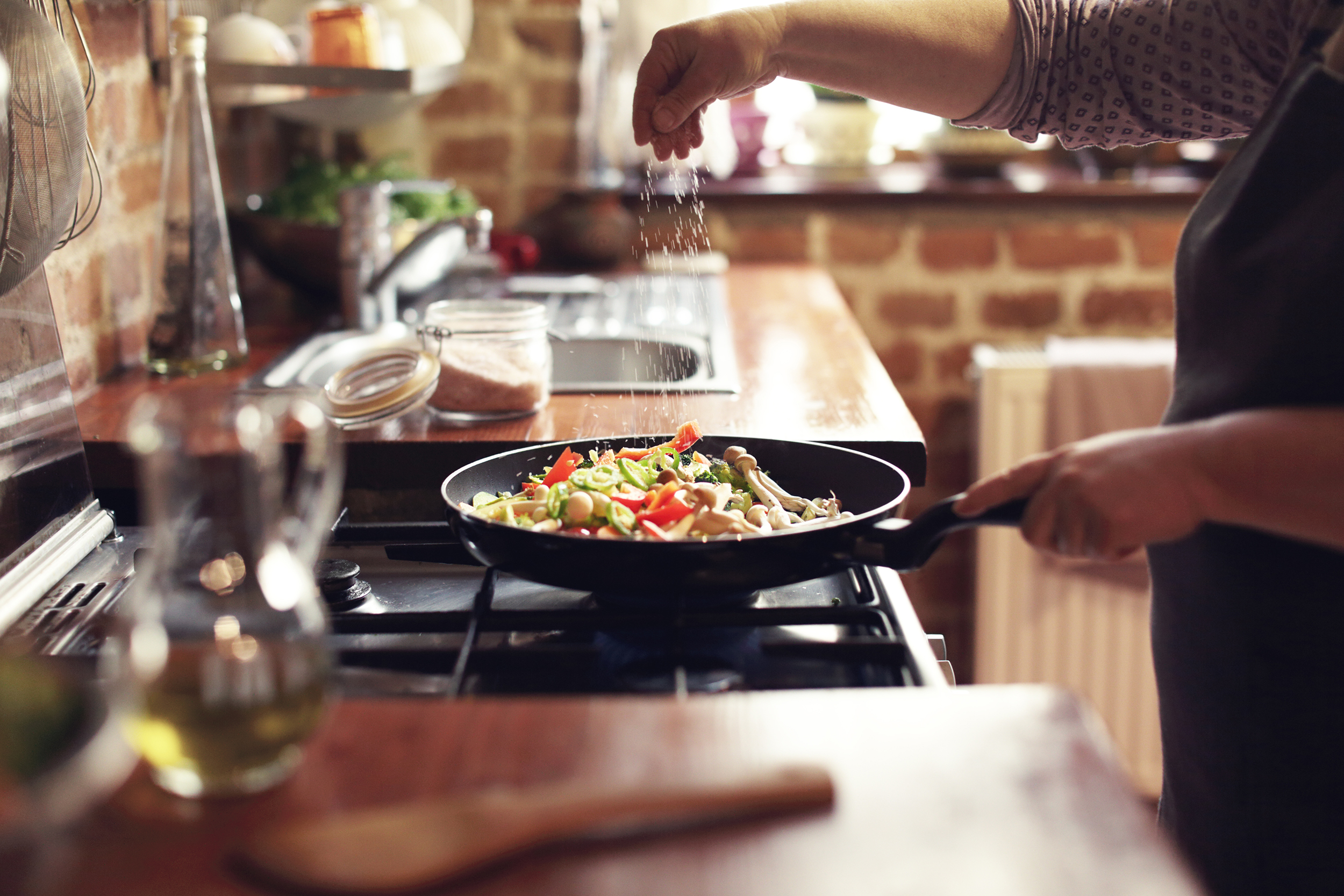11 Simple Cooking Tips You Need to Memorize

1. Read the whole recipe first
If you’re cooking from a recipe, the best tip I can give you is to read through the whole thing all the way through before you start to cook. Not only will this help you gain a better understanding of what the final dish should look and taste like, you’ll also be able to ascertain which pots, pans, and tools you need, as well as catch important instructions like “marinate overnight.”
2. Set up mise en place
Mise en place is a French term that literally means “put in place.” It also refers to a way cooks in professional kitchens and restaurants set up their work stations—first by gathering all ingredients for a recipes, partially preparing them (like measuring out and chopping), and setting them all near each other. Setting up mise en place before cooking is another top tip for home cooks, as it seriously helps with organization. It’ll pretty much guarantee you never forget to add an ingredient and save you time from running back and forth from the pantry ten times.
3. Always sharpen knives
Don’t fear sharp knives. Can they give you a nasty cut? Absolutely. But dull knives are constantly proven to be more dangerous. They’re more prone to slip when cutting, which makes the chance of cutting yourself higher. If you commit to keeping knives sharp, you should also learn how to properly hold a chef’s knife, as well as how to hold the food you’re cutting.
4. Seasoning well and often
Major tip: season! your! food! Salt is the key to making food’s flavor jump around on your tongue. Most recipes will mention when you should add salt (and probably pepper as well), but it’s a good rule of thumb to add at least a pinch or two when you start cooking and again at the very end. Your palate will be the ultimate guide here, so taste often.
5. Get a salad spinner
Some people say a salad spinner is superfluous. I am not one of those people. OK, they’re bulky and sort of annoying to clean, but if you have room for a pot you have room for a salad spinner. Not only does a salad spinner make washing lettuces, herbs, and greens a snap, it dries them so much so more efficiently than towels ever could.
6. Roll citrus to get more juice out
Sometimes all a dish needs is a squeeze of lemon or lime to take it to the next level. To get the most juice out of your citrus, roll it on a cutting board before slicing in.
7. Use the right pans
When a recipe says to use a certain type of pan, use that pan. If you only own one nonstick pan, the best tip I can give you is to wait for a good sale at a kitchen store, then buy yourself a stainless steel pan and a cast iron skillet. It’s also smart to replace cheap nonstick pans every few years, as the coating can wear down.
8. Dry meats, legumes, and vegetables before cooking them
Hot tip: water and heat make steam, so when you try to cook something that’s still wet, it won’t bown properly. Meat should be patted with paper towels before you toss it into the pan, chickpeas can be drained in a colander and then dried on a towel before they go onto a sheet pan (this goes for vegetables too, minus the colander part).
9. Don’t crowd the pan
Whether you’re baking or pan frying, it’s important to avoid crowding the pan. Similarly to when vegetables or proteins are cooked while moist, when they’re crammed into a pan they’ll steam instead of brown, which is never good.
10. Clean as you go
Instead of piling every single dish and tool you used to make a meal into the sink to wash when you finish eating (and don’t forget to wipe down the counters and the stove), embrace the clean-as-you-go method. Instead of leaving vegetable trimmings and peels on the counter, toss them in one big garbage bowl for one easy dump and less mess. Have ten minutes to spare while the vegetables roast? Do ten minutes of washing and wiping.
11. Use the freezer for more than leftovers
You already know that you can stash leftovers in the freezer basically forever. But if you make room in your freezer, it can also house a number of items that will make your life easier. Frozen ginger will stay fresh for longer, as well as be easier to grate on a microplane. Tomato paste, stock, and sauces can be frozen into ice cubes and easily defrosted for recipes. You can also freeze cookie and pie dough, egg whites and yolks, and vegetable trimmings (for stock) and use them whenever you need. The freezer is also a prime spot to store a bag of items you intend to compost, as the cold kills the smell and decay.


